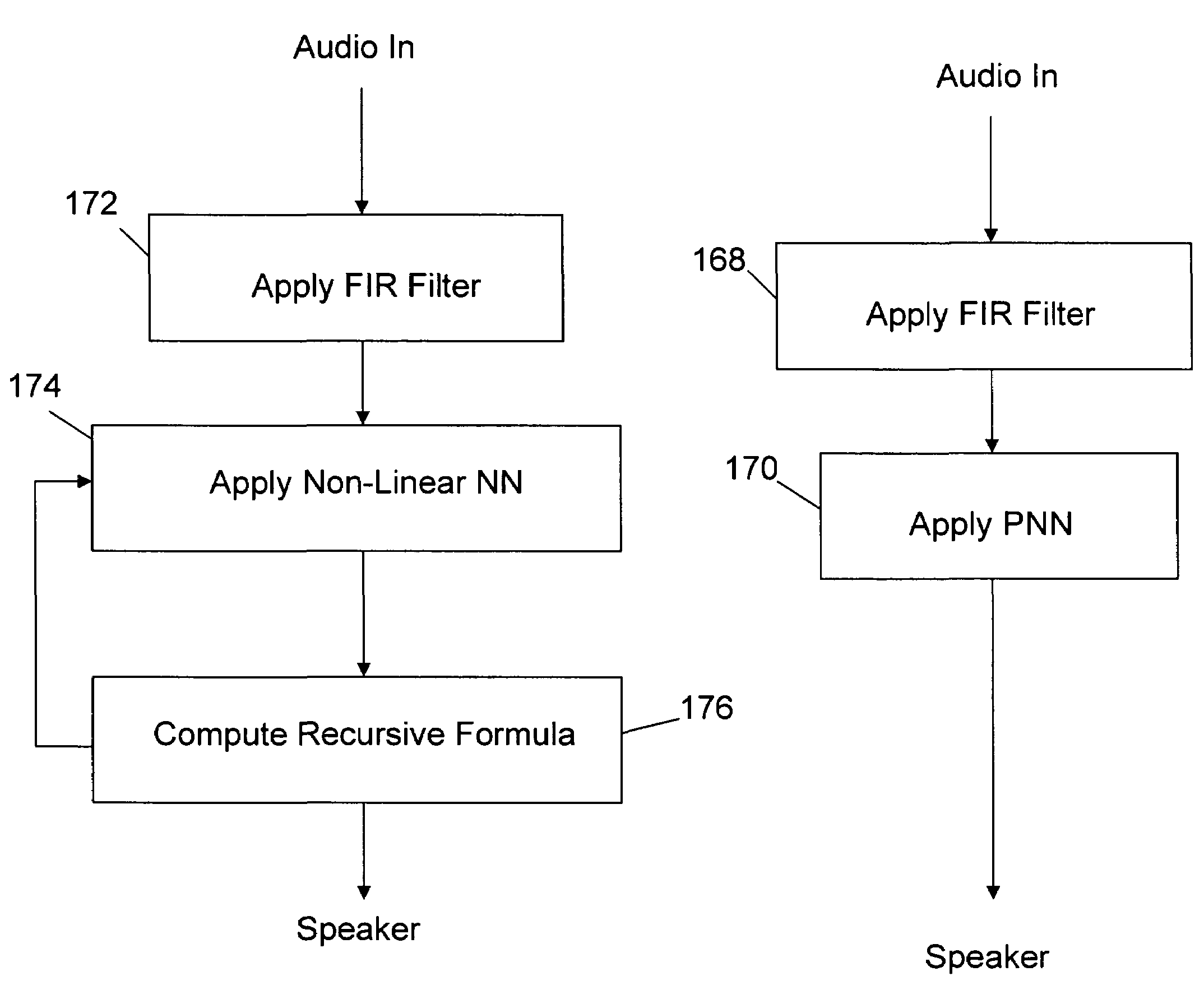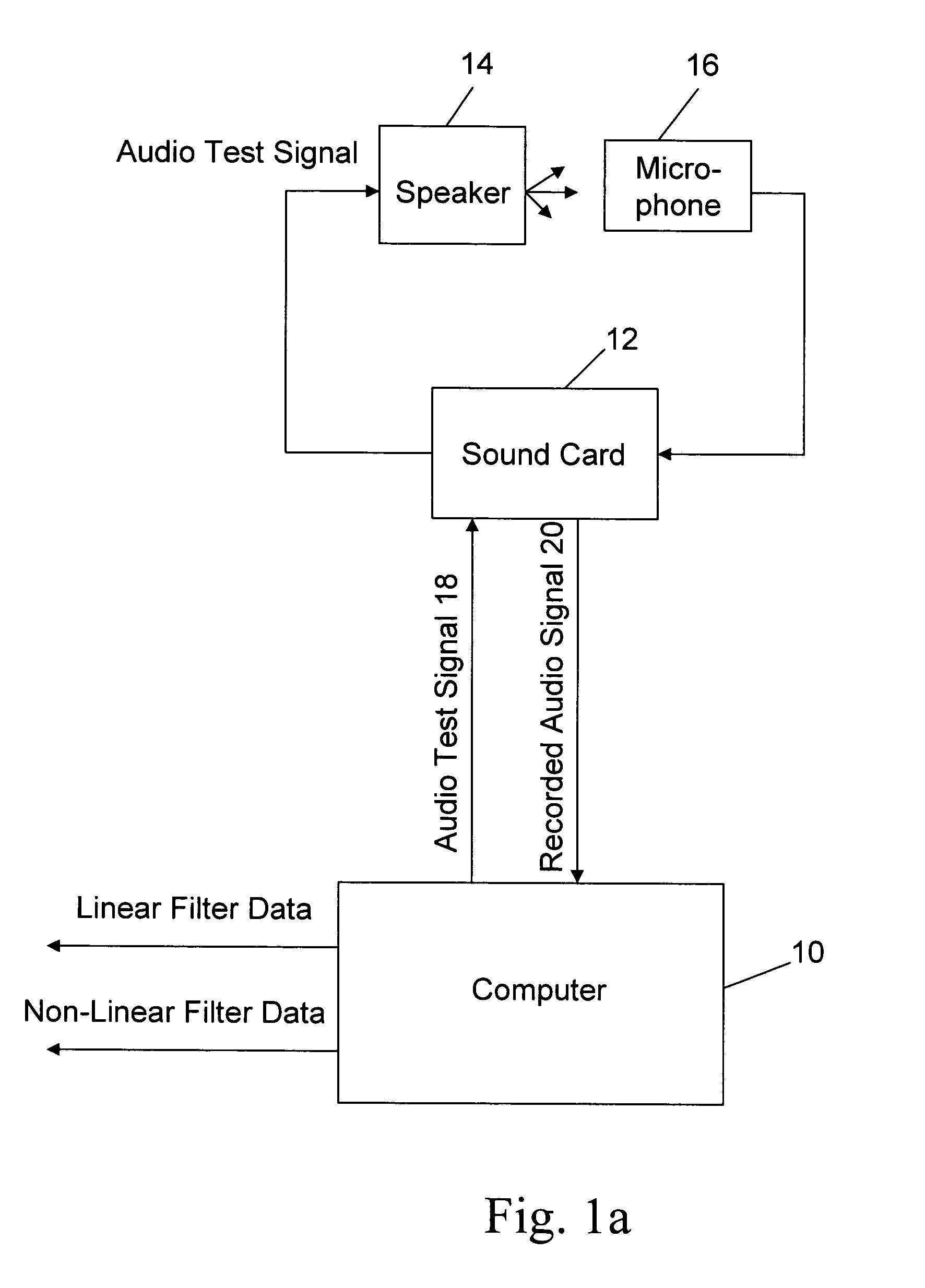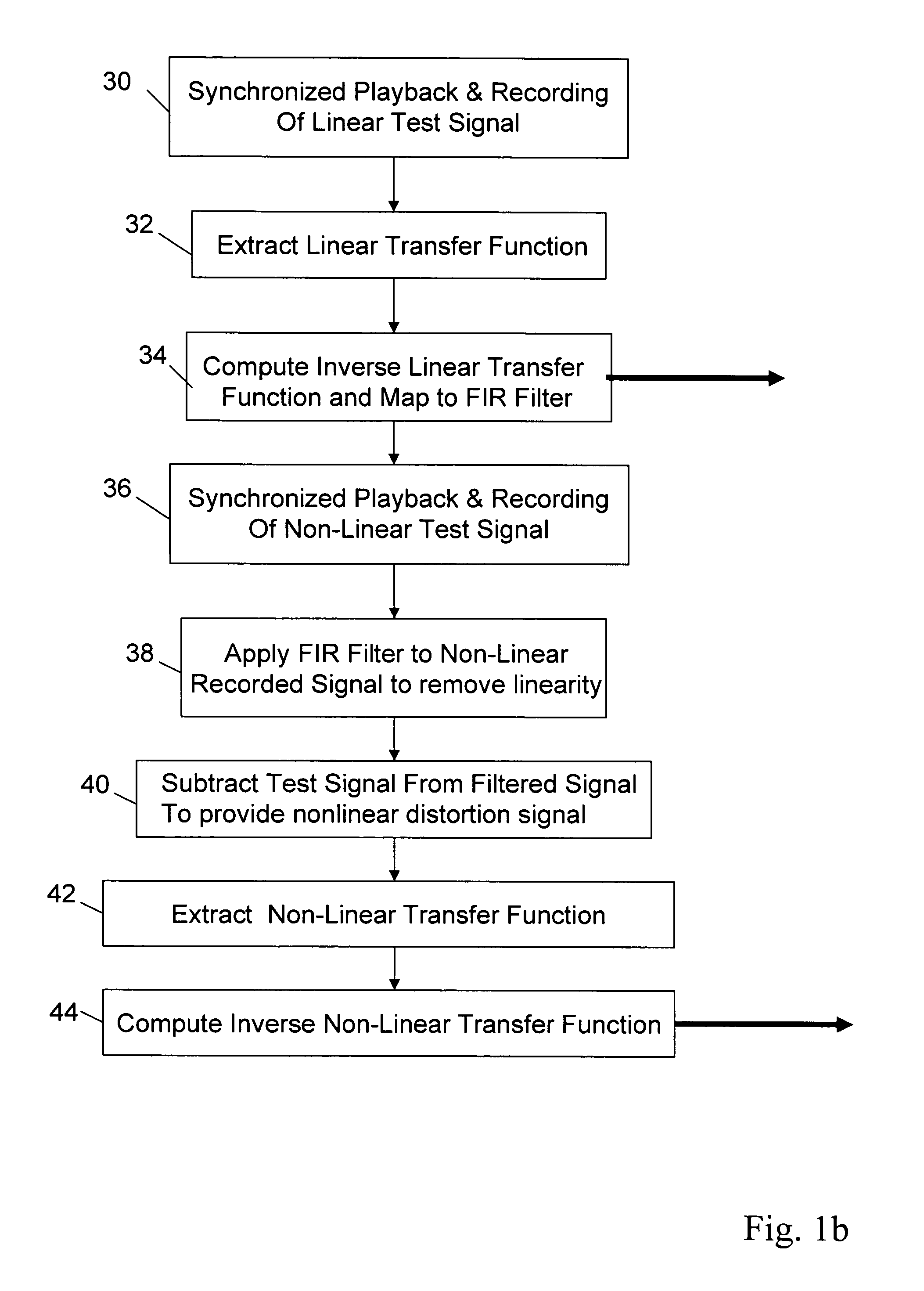Neural network filtering techniques for compensating linear and non-linear distortion of an audio transducer
a technology of linear and non-linear distortion and neural network, applied in the field of audio transducer compensation, can solve the problems of inability to control the time-domain characteristics, inconvenient adjustment of compensation, and inability to meet certain high-end audio applications. achieve the effect of improving efficiency
- Summary
- Abstract
- Description
- Claims
- Application Information
AI Technical Summary
Benefits of technology
Problems solved by technology
Method used
Image
Examples
Embodiment Construction
[0027]The present invention provides efficient, robust and precise filtering techniques for compensating linear and non-linear distortion of an audio transducer such as a speaker, amplified broadcast antenna or perhaps a microphone. These techniques include both a method of characterizing the audio transducer to compute the inverse transfer functions and a method of implementing those inverse transfer functions for reproduction during playback, broadcast or recording. In a preferred embodiment, the inverse transfer functions are extracted using time domain calculations such as provided by linear and non-linear neural networks, which more accurately represent the properties of audio signals and the audio transducer than conventional frequency domain or modeling based approaches. Although the preferred approach is to compensate for both linear and non-linear distortion, the neural network filtering techniques may be applied independently. The same techniques may also be adapted to com...
PUM
 Login to View More
Login to View More Abstract
Description
Claims
Application Information
 Login to View More
Login to View More - R&D
- Intellectual Property
- Life Sciences
- Materials
- Tech Scout
- Unparalleled Data Quality
- Higher Quality Content
- 60% Fewer Hallucinations
Browse by: Latest US Patents, China's latest patents, Technical Efficacy Thesaurus, Application Domain, Technology Topic, Popular Technical Reports.
© 2025 PatSnap. All rights reserved.Legal|Privacy policy|Modern Slavery Act Transparency Statement|Sitemap|About US| Contact US: help@patsnap.com



